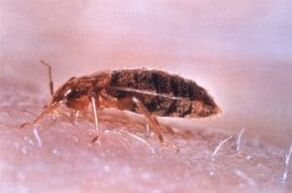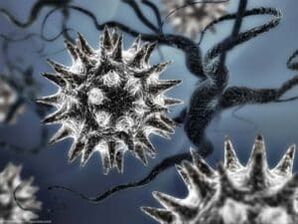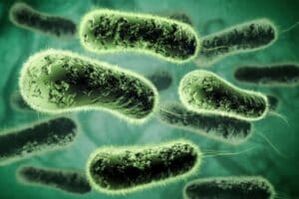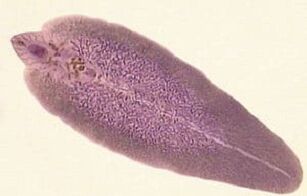Knowing the path of the parasite's entry into the body, then take measures to avoid contact with the source of the infection. Many people already know what worms are. However, the average person is little known about species that live in the circulatory system, lymphatic subcutaneous lymph, muscle, brain and internal organs.
All types of parasites in the human body are classified into representatives: protozoa, flatworms and nematodes, arthropods and their larvae.Viruses, pathogenic bacteria and fungi can be classified as parasites, but they are differentiated into a separate group. Infectious diseases are divided into: viruses, fungi, bacteria and parasites. Classification of the human parasite includes - a unique fish (common vandellia), capable of penetrating the human urethra (random host).
Parasitism and its Types

Who is a parasite? These are organisms that live off the life of another organism, are not genetically related to it and participate in antagonistic relationships, that is, interfere with life. It is not advisable to extrapolate the concept of parasites to microorganisms that live inside the body without causing any particular harm to it. In nature, there are parasitic plants and animals, depending on the type of host. In the course of this way of life, the parasitic and host systems are continuously active. The first man's mission: survive the second, don't kill him for a long time.
Classify parasites by type:
- Localization area: external and internal parasites (exogenous and endogenous).
- Lifestyle: continuous (obligatory) and free-living forms of parasitic life that, under certain conditions, begin to exist with the destruction of other organisms (free parasites).
- By time of contact with the host: parasitic temporarily and permanently (fixed and periodic).
In the food chain, animal parasites are usually a quadratic or tertiary consumer, since they feed on herbivores or predators. The way the parasite feeds removes the host's nutrients and / or leads to the destruction of cells and tissues. Host antagonism often occurs due to the release of toxic metabolic products by dangerous inhabitants. This leads to certain symptoms (allergies, digestive system disorders, signs of damage to various internal organs).
Virus

Viruses are intracellular parasites with a protein genetic structure. Due to the material of the cell, they reproduce by themselves. A virus is an obligatory parasite.
According to the classification, depending on the type of genetic material, viruses containing RNA and DNA are isolated. Intracellular agents of the first group include:
- Enterovirus. They multiply in the digestive tract, causing problems in different human organs.
- Rhinovirus. The causative agent of ARVI.
- Flu virus, rabies and tick-borne encephalitis.
- Papillomavirus.
The second group includes: adenovirus (which causes an acute respiratory infection), herpes and smallpox pathogen.
Virus, which invades the target cell, depending on its processes, integrates into the genetic material or is localized in the cytoplasm, and then multiplies (multiplies). Subsequently, cell death occurs due to lysis, apoptosis or deformation of the membrane structure. Some representatives (papillomavirus, Epstein-Barr virus) are capable of causing malignant cell degeneration.
How a virus gets inside:
- Aerial.
- Through the gastrointestinal tract when drinking water and eating food.
- Through the skin and outer mucous membranes, such as the conjunctiva of the eye.
- Made of arthropod vectors (insects, ticks).
- Due to the use of non-sterile medical devices (syringes, pipettes).
Each virus adapts to a specific cell, differentiating its target with the help of receptors.
Bacteria

Among bacteria, rickettsiae, intracellular parasites, occupy a special place. These are the most primitive virus-like representations. In humans, these microorganisms cause: typhus fever, tick-borne rickettsiosis, Rocky Mountain spot fever. People are infected with rickettsiae through the bites of ticks, fleas, and lice.
Other intracellular parasites of chlamydia cause one of the most common venereal diseases (chlamydia) and cause severe eye inflammation, infant pneumonia, and enteritis.
Dangerous bacteria include:
- Salmonella is the cause of typhoid fever.
- Stick tetanus.
- A pale spirochetes causes syphilis because it is difficult to diagnose the disease and leads to a delay in treatment.
- Pneumococci, can cause pneumonia and, less commonly, bacterial meningitis.
- Bacillus tuberculosis, which may not show for a long time, then changes to an open form.
- Escherichia coli due to antibiotic resistance. Causes gastroenteritis, rarely meningitis and urinary tract infection.
External parasites like Staphylococcus aureus are known to cause many types of skin infections. The most dangerous consequences of its action: pneumonia, meningitis, osteomyelitis, endocarditis, severe shock from exposure to microbial toxins and sepsis (commonly known as intoxicationblood).
Mushrooms

Pathogenic fungi - parasites in humans are better protected from the effects of drugs than bacteria. The most common fungal disease is candidiasis (thrush), which is localized on various mucous membranes with a weakened immune system. The fungus of the genus Candida lives in the body of any healthy person and only brings tangible harm if the protective function is not successful. Conditional pathogenic bacteria and fungi are a group of microorganisms that line the lines between non-pathogenic and pathogenic. Therefore, as a rule, they are not classified as parasites.
Pathogenic micellial fungi are human parasites that often cause diseases in the outer region:
- Keratomycosis. Fungal reproduction occurs in the keratinized region of the epidermis or on the hair cuticle (trichosporia node, vitiligo).
- Fungal skin diseases. Pathogens not only affect the epidermis, but also the dermis, nails, and hair (ringworm, scaly).
- Deep mycoses. Damage to the skin and neighboring tissues, as well as internal organs. These include histoplasmosis - a serious systemic fungal disease and aspergillosis - damage to the mucous membranes and skin caused by aspergillus.
The classic sources of bacterial and fungal infections are sick people, animals, soil, dirty water and food.
Protozoa
Protozoa is another unicellular parasite with bacteria and fungi. On what systemic site do human protozoan parasites are isolated?
- Some amoebas are parasites that easily cause disease. The most famous is amoebic dysentery that enters the human body in the form of a cyst (resting form). The pathogen penetrates the large intestine (luminal form), then penetrates the mucous membrane and affects various internal organs with the blood stream. Amoeba is an aquatic organism, so the main source of infection from them is dirty water. Acanthamoeba keratitis is a rare eye disease called acanthamoeba keratitis, which is becoming more frequent due to the proliferation of contact lenses.
- Whip (Leishmania, Giardia, Trichomonas). Trichomoniasis is the most common disease of the genitourinary system, dangerous with its complications (infertility, prostatitis, premature birth, etc. ).
- Apicomplexes (Sporozoans). Except for colpodellids, this group includes only mandatory parasites (Toxoplasma, Plasmodium malaria, Cryptosporidium, Coccidia, sarcocysts). Sporozoan cysts enter the body after being stung by an insect, eating an infected animal, or drinking water.
- Link. For humans, Balantidia is very dangerous, causing diarrhea and ulcerating the intestinal wall due to the action of the large intestine. Ciliates are the largest pathogenic single-celled organisms.
The simplest human parasites cause protozoses. What parasites live in the human nervous system among protozoa? For example, the causative agents of toxoplasmosis and cerebral malaria. Among amoebas, the parasite is ostensibly Neglerius Fowler, which is capable of infecting the nervous system.
Multicellular
Multicellular parasites include flat worms, roundworms, spiders and insects. Previously, as a rule, it settled inside a person (in different systems and organs), and certain species migrated or invaded (rishta, the larvae of Gnathostoma spinigerum and hookworm, schistosomes) into the subcutaneous layer. Worms are the common name of all worms that infect helminths (helminths).
Common diseases caused by worms
Group of flukes (genetic fluke):
- Opisthorchiasis. Pathogens: liver fluke, for example, cat tapeworm and Siberian fasciolosis. Infection occurs from eating infected river fish and poor heat processing.
- Small liver fluke. Caused by the liver and liver fluke. Infection occurs through consumption of polluted water or coastal grass.
- schistosomiasis. Pathogens of schistosomes (especially blood fluke) live mainly in hot climates. They get into the skin when exposed to water.
- Paragonimiasis. The cause of the disease is a lung fluke, found in hot climates. Tropical freshwater crabs or crabs infected with worms and poor processing are dangerous.

The life cycle of the parasite from a group of trematodes is very complex, including several stages of larvae and gastropods as intermediate carriers. Flukes are parasitic animals in vertebrates, acting as a temporary and permanent host. The individual larvae stages can develop without fertilization. The devices that fix and feed the fluke inside the host are the straws.
The tapeworm is a mandatory parasite in the human small intestine. Their bodies are composed of proglottids, which periodically break apart and pass out with fertilized eggs. The life cycle stages of a tapeworm necessarily include the fin (cystworm), which forms in the temporary host. Host permanently devours Finn, developing into an oblong (adult) form. Structural features of tapeworms are lack of digestive system and absorption of nutrients by the entire surface.
Most popular:
- Bovine tapeworm (tapeworm without arms) causes teniarinhoses. Infection occurs through the meat of cattle, the muscles contained by the Finns, that are formed in the body after the animal swallows eggs with food.
- Pig tapeworm (armed tapeworm) is the causative agent of tapeworms (Finn stage) and tapeworm (adult). In addition to the foam, the worm nest is equipped with a hook ring. A person can perform the function of an intermediate and permanent owner at the same time.
- Broad tapeworm causes diabetic filariasis. Intermediate hosts are arthropods and fish. A person can become infected through unsalted caviar and fried or undercooked freshwater fish.
The parasite eats blood and tissue (fluke) or digested food (tapeworm).
Roundworm
Roundworm (roundworm) common in humans have any parasites?

- Roundworm. Roundworm disease includes migratory (larval) and intestinal (adult) stages. The larvae penetrate the wall of the small intestine, travel to the lungs, bypass the liver and heart, and undergo stages of molting respectively. It enters the oral cavity, is swallowed again and becomes an adult in the small intestine.
- Pinworms. The causative agent of enterobiasis ingests in the terminal and primary regions of the small and large intestines, multiplying in the ileum. Females lay eggs in the anal folds, causing intense itching.
- Vlasoglav is the cause of trichocephalosis. These parasites in the human body penetrate the mucous membrane of the original part of the large intestine and feed on tissue fluids and blood.
- Trichinella causes a dangerous disease called helminthiasis. In severe cases, the nervous system is damaged. These are true killers, whose larvae penetrate the wall of the small intestine and are carried throughout the body. Most of them penetrate the striated muscle, they can enter the eyes, cause pain and swelling in the face, into the lungs, leading to a cough. So far, no cure has been invented to fully recover.
- Toksokara. Distinguishing between larvae (which occurs more often) and infection with roundworm (intestinal). The invasion is characterized by the severity of allergic reactions. The larvae spread throughout the body, burrowing into tissues, enveloping and forming granulomas.
- Hookworms are more common in the tropics and subtropics. When infected with hookworms, the worms inside the intestine secrete proteolytic enzymes that destroy the walls and reduce blood clotting. Internal parasites appear due to the transfer of larvae through the skin from contaminated water.
- Escherichia coli and related species are tropical parasites. The disease they cause, strongyloidiasis, may be asymptomatic for decades. With reduced immunity, the bearer has a high risk of death (60-85%). The Rishta
- is a sub-tropical helminth that causes major fasciolosis. The larvae enter the intestinal wall. The females touch the subcutaneous layer and when the host is in the water, they expel the larvae through the skin. The temporary host is a crayfish.
The peculiarities of the parasite's habitat affect how they enter the body: in contact with contaminated water or soil, with those carrying the larval stage. Many representatives of roundworms do not have an intermediate host and belong to the helminth family. Their infection occurs mainly through contaminated water, unwashed hands, fruits or vegetables, as well as through eating wild animals.
Treatment and serious consequences of helminthiasis
An important way to diagnose helminthiasis is a blood test. Eosinophils (a type of white blood cell) found in high concentrations along with other signs of infection indicate the presence of worms and certain pathogenic protozoa in the body. Treatment of helminthiasis like? Medications are used for the relief of specific symptoms and treatment. Antiallergic (desensitization) and detoxification therapy is used. Basically, the drug is administered by infusion (using a dropper), sometimes by injection:
- A drug that replaces plasma and eliminates the effect of toxins.
- Isotonic glucose solution and salt solution.
- Vitamins C and B6.
- Sodium bicarbonate (soda), calcium chloride or gluconate.
- Preparations used at high temperatures.
- Hormonal drugs are used in difficult cases (hepatitis or allergic myocarditis). The amount of potassium is associated with them.
- Drugs for the treatment of heart failure and edema.
There is evidence that certain parasitic worms, such as tapeworms, can cause cancer. The larvae's stem cells can degenerate into cancer. The parasite can indirectly cause cancer by weakening the immune system. Interesting data are obtained in the study of the effect of flukes on the liver. As a result of exposure to the fluke waste, normal cells can turn into cancerous cells. The parasite is mainly localized in the digestive system, but their larvae can invade various internal organs. For example, in the kidneys (streptococcal disease, schistosomiasis), cardiomyopathy (helminthiasis, hookworm disease), liver (Toxocariasis). Human parasitic worms often affect the nervous system. Cysticercosis, echinococcosis, alveococcosis and schistosomiasis are known.
Arthropods
The order of insects includes well-known exogenous species such as fleas, aphids, and blood-sucking bugs. Unlike lice, these are temporary parasites, that is, they live in spite of the help of their host. Arthropods parasitize in the arachnoid order including the famous scabies mite. Mating of men and women occurs on the surface of the epithelium. The parasites in the human body then lay eggs in the horny layer of the skin, causing intense itching. Many people know what ixodid ticks are. These are arthropods that are parasitic from the arachnoid membrane, of which the most famous representative is the taiga tick - the carrier of the dangerous disease (tick encephalitis, Lyme disease). Among the blood-sucking amphibians, there are: malaria and malaria mosquitoes, zebra mosquitoes, zebra mosquitoes, zebra mosquitoes, horse flies and real flies. These arthropods can cause a strong allergic reaction, and are also carriers of dangerous viruses and bacteria. Some species of flies, especially butterflies, are parasitic larvae under human skin, causing dilated pupils. The larvae have the ability to enter the body.






































